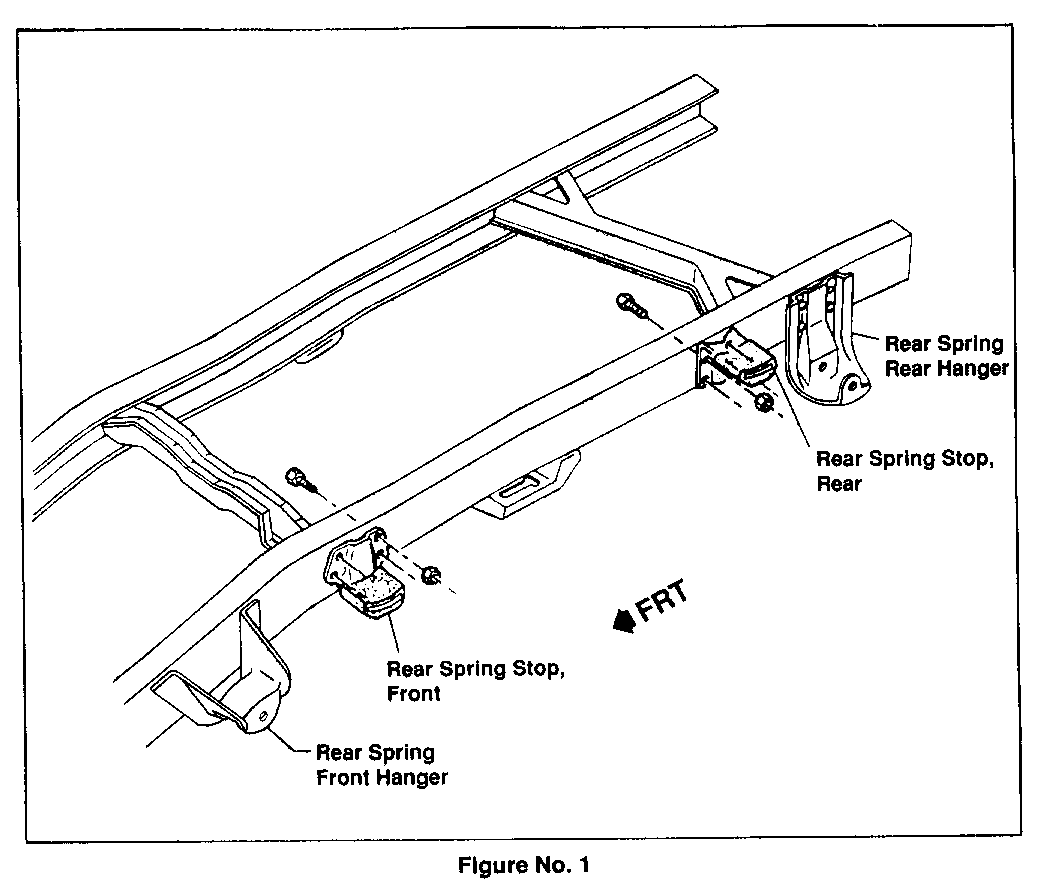REAR AUXILIARY SPRING NOISE REPLACE SPRING STOPS

Subject: REAR AUXILIARY SPRING NOISE
Model and Year: 1988-90 C2, C3 AND K3 TRUCKS
TO: ALL CHEVROLET DEALERS
THIS BULLETIN CANCELS AND SUPERSEDES DEALER SERVICE BULLETIN NO. 90-366-3D, DATED OCTOBER 1990. THE MODELS INVOLVED HAVE BEEN RESTRICTED AND VIN BREAKPOINTS HAVE BEEN CHANGED. ALL COPIES OF 90-366-3D SHOULD BE DISCARDED.
Some 1988 - 1990 C2, C3 and K3 trucks equipped with auxiliary rear springs may experience a noise from the rear spring area. This noise may be described as a slap sound and is caused when the auxiliary, or second stage springs, contact the spring stops.
This condition can be repaired by replacing the existing spring stops and insulators with revised one piece spring stops. These revised spring stops feature insulators which are molded directly to the metal stop (Figure 1).
INVOLVED VEHICLES:
All 1988-90 C2, C3 & K3 vehicles (models C20903, C/K30903 & R05 (dual rear wheels) and C/K30953 & R05) equipped with auxiliary rear springs. These involved vehicles can be identified from other C3 & K3 models by examining the rear auxiliary spring stops (Figures 2 & 3). If the design and bolt pattern do not match those shown in Figures 2 & 3 the truck is not involved and the part numbers listed cannot be installed on the truck. Vehicles built after the VIN breakpoints listed below are equipped with the revised stops.
Ft. Wayne (Z) - No Vehicles Involved
Oshawa (1) - L1229961
Pontiac E (E) - LE219187
PARTS INFORMATION
Part Number Description Quantity ----------- --------------- --------- 15654886 Rear Spring Stop, Front 2 15654887 Rear Spring Stop, Rear 2
Parts are currently available from GMSPO.
WARRANTY INFORMATION
For vehicles repaired under warranty use:
Labor Operation Number: T7051
Labor Time: .6 Hr
TROUBLE CODE: 92



General Motors bulletins are intended for use by professional technicians, not a "do-it-yourselfer". They are written to inform those technicians of conditions that may occur on some vehicles, or to provide information that could assist in the proper service of a vehicle. Properly trained technicians have the equipment, tools, safety instructions and know-how to do a job properly and safely. If a condition is described, do not assume that the bulletin applies to your vehicle, or that your vehicle will have that condition. See a General Motors dealer servicing your brand of General Motors vehicle for information on whether your vehicle may benefit from the information.
